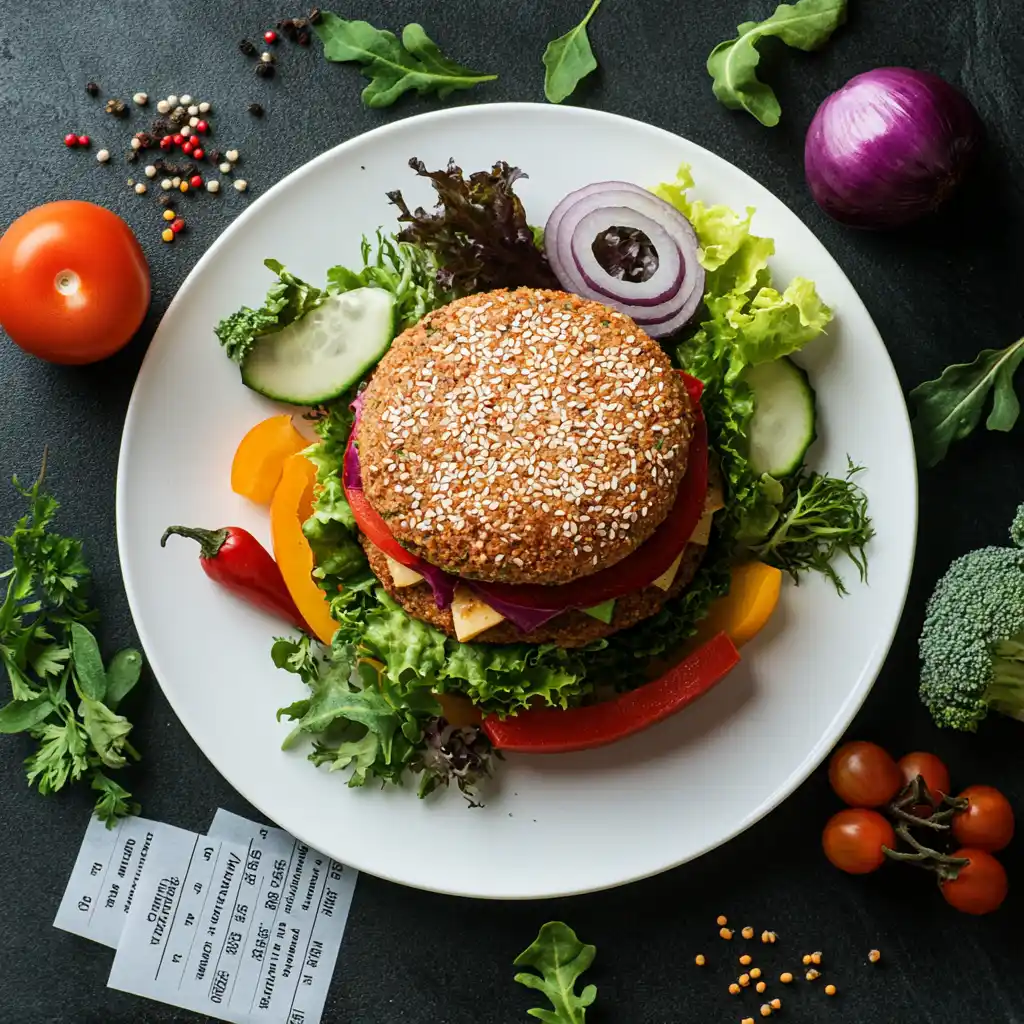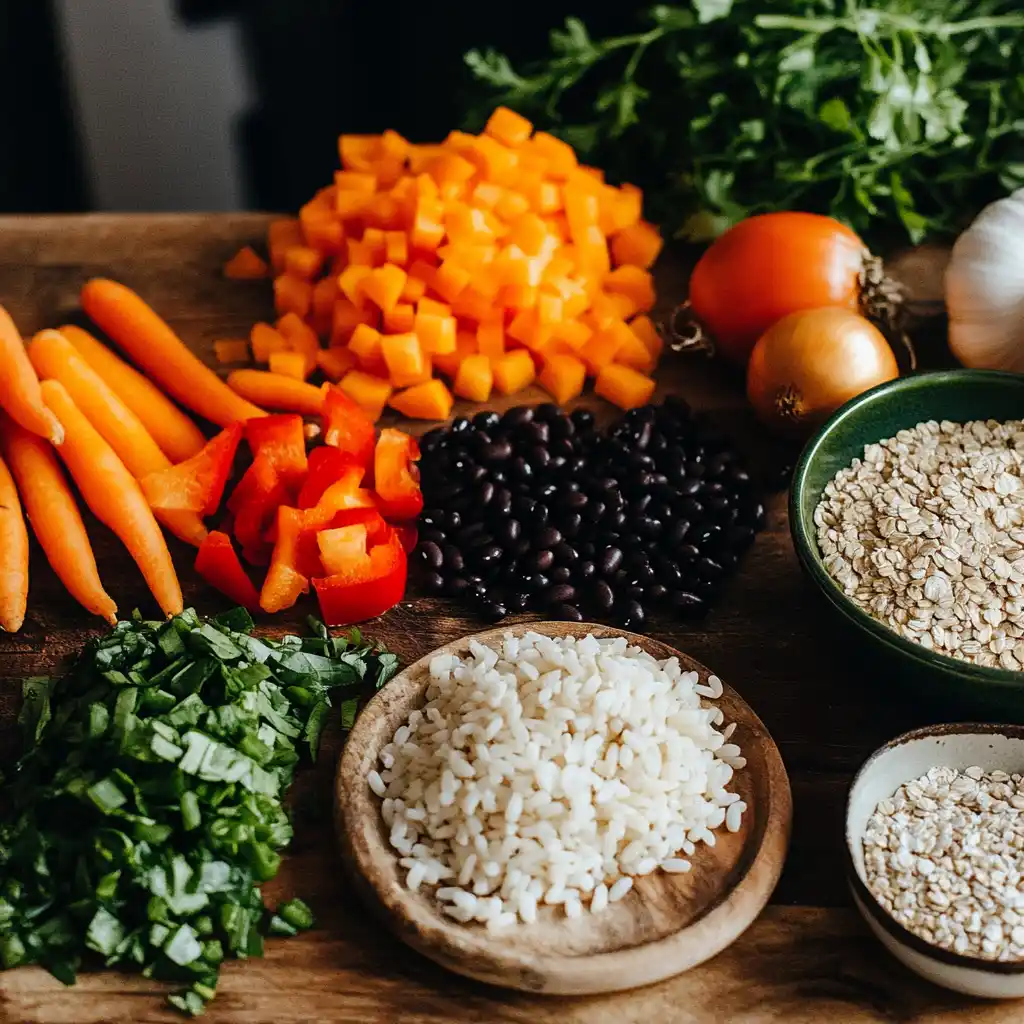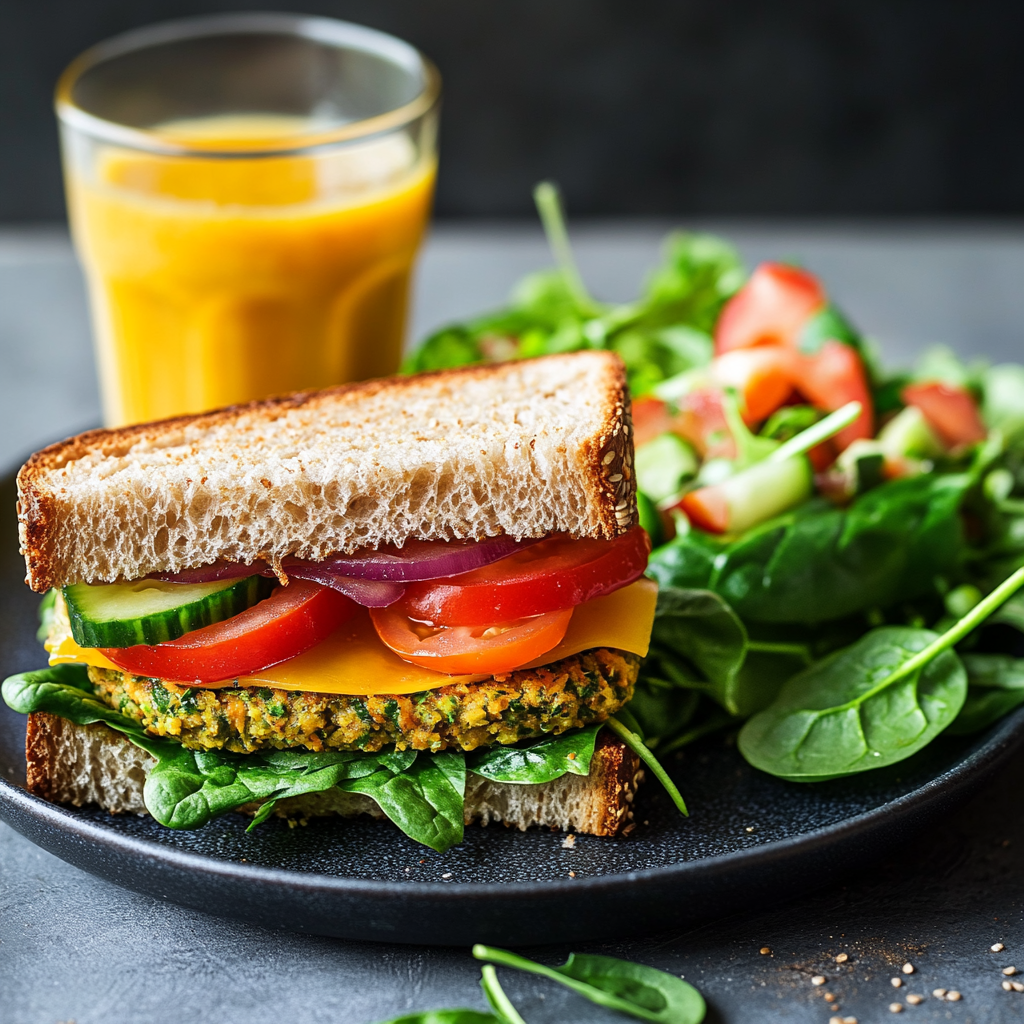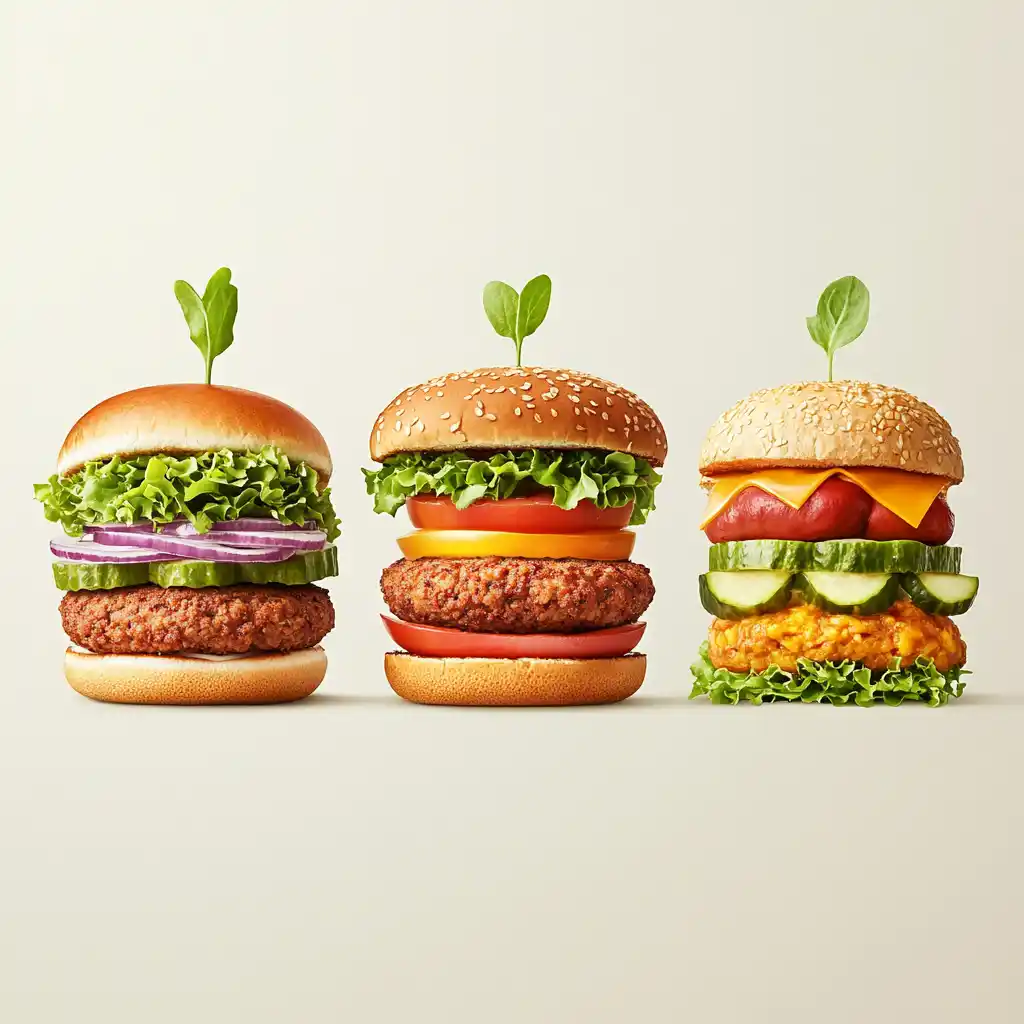Nutritional Value of Subway Veggie Patty: Is It a Healthy Choice? Subway’s Veggie Patty has become a go-to choice for vegetarians and those looking for a plant-based meal at the popular sandwich chain. With a mix of vegetables, grains, and protein sources, it offers a hearty alternative to traditional meat fillings. But how nutritious is the Subway Veggie Patty?https://royalesrecipes.com/nutritional-value-of-subway-veggie-patty/#more-1292
In this article, we’ll explore the nutritional value of the Subway Veggie Patty, breaking down its calories, protein, carbohydrates, fats, and essential nutrients. We’ll also compare it to other plant-based options and offer tips on making your Subway meal even healthier.
In This Recipe
Nutritional Breakdown of Subway Veggie Patty

Understanding the nutritional profile of the Subway Veggie Patty can help determine whether it aligns with your dietary goals. Below is a breakdown of its macronutrients and essential nutrients.
1. Calories in Subway Veggie Patty
A single Subway Veggie Patty (before adding bread, toppings, or sauces) contains approximately:
- Calories: 160–200 kcal
- Serving Size: 85g (1 patty)
The calorie count remains moderate, making it a decent choice for those managing their daily intake. However, adding bread and sauces can significantly increase the calorie count.
2. Protein Content: A Good Plant-Based Source? Nutritional Value of Subway Veggie Patty
Protein is essential for muscle maintenance and overall health. The Subway Veggie Patty provideshttps://www.subway.com/en-AU/MenuNutrition/Menu/Product?ProductId=6898&MenuCategoryId=377:
- Protein: 9–12g per patty
This is a respectable amount of protein for a plant-based meal, thanks to soy protein, black beans, and grains in the ingredients. It may not be as high as a meat-based option, but it can still help meet daily protein needs.
3. Carbohydrates and Fiber Content
Since the veggie patty is made with grains and vegetables, it contains moderate carbohydrates:
- Total Carbohydrates: 15–20g
- Dietary Fiber: 3–5g
The fiber content is beneficial for digestion and gut health, making it a more nutritious option than highly processed fast food alternatives.
4. Fat Content: How Healthy Is It?
The fat content in the Subway Veggie Patty mainly comes from plant-based ingredients:
- Total Fat: 5–8g
- Saturated Fat: 1–2g
It contains minimal saturated fat compared to animal-based patties, making it a heart-friendly option. However, some versions may contain small amounts of processed oils, so moderation is key.
5. Vitamins and Minerals: Hidden Nutritional Benefits
The vegetables and grains in the Subway Veggie Patty provide a range of essential nutrients, including:
- Vitamin A (from carrots) – Supports eye health
- Vitamin C (from bell peppers) – Boosts immunity
- Iron (from soy protein) – Essential for blood health
- Calcium – Supports bone strength
While it provides some key vitamins and minerals, it is not a complete source of all nutrients. Pairing it with nutrient-rich toppings (like spinach, tomatoes, and avocado) can enhance its nutritional value.
In the next section, we’ll explore the key ingredients in the Subway Veggie Patty and their individual health benefits.
Key Ingredients and Their Nutritional Benefits
The Subway Veggie Patty is made from a combination of vegetables, grains, and plant-based proteins, giving it a well-rounded nutritional profile. Let’s take a closer look at its key ingredients and their health benefits.

1. Vegetables: A Natural Source of Nutrients
Subway’s veggie patty contains a variety of vegetables that contribute to its flavor, texture, and nutritional value.
- Carrots – Rich in beta-carotene (Vitamin A), which supports eye health and immune function.
- Bell Peppers – High in Vitamin C, which strengthens the immune system and promotes collagen production.
- Celery – A low-calorie ingredient that adds fiber and supports digestion.
- Onions & Garlic – Contain antioxidants that support heart health and reduce inflammation.
- Mushrooms (optional in some versions) – Provide a meaty texture and are a great source of B vitamins and selenium.
Health Benefit: The mix of vegetables makes the patty nutrient-dense and flavorful while keeping it low in calories.
2. Grains: A Source of Energy and Fiber
Whole grains are essential for long-lasting energy and digestive health. The Subway Veggie Patty contains:
- Brown Rice – A complex carbohydrate that provides fiber and B vitamins.
- Oats – Help lower cholesterol and stabilize blood sugar.
- Bread Crumbs – Aid in binding the patty but may contain refined flour (depending on the version).
Health Benefit: Whole grains boost fiber intake and support digestion, making the patty more filling.
3. Plant-Based Proteins: Essential for Muscle Growth
The Subway Veggie Patty contains plant-based protein sources that contribute to its meaty texture and high protein content.
- Soy Protein – A complete plant protein containing all essential amino acids.
- Black Beans (or Lentils in Some Variations) – Provide fiber, protein, and iron for sustained energy.
- Chickpea Flour (in Some Variants) – Adds protein and improves the texture of the patty.
Health Benefit: These ingredients make the veggie patty a good plant-based protein option, though it may not be as high in protein as meat alternatives.
4. Seasonings and Binders: Enhancing Taste & Texture
To create the signature flavor of the Subway Veggie Patty, several seasonings and binders are used:
- Soy Sauce or Tamari – Adds umami flavor and a hint of saltiness.
- Garlic Powder & Onion Powder – Boosts the savory taste.
- Black Pepper & Paprika – Adds mild spice and depth.
- Flaxseed Meal or Eggs – Acts as a binding agent to hold the patty together.
Health Benefit: Natural seasonings enhance flavor without artificial additives, though sodium levels can be high.
Are There Any Unhealthy Ingredients?
While the Subway Veggie Patty has many healthy components, there are some things to watch for:
- Processed Oils (Canola or Soybean Oil) – Can increase the calorie count and saturated fat content.
- Sodium (Salt Content Can Be High) – Some versions contain 500-700mg of sodium, which is 25-30% of the daily limit.
- Breadcrumbs (Refined Flour in Some Versions) – May contain processed carbs that add empty calories.
Healthier Tip: If you’re watching sodium or processed ingredients, ask Subway staff about ingredient variations or make a homemade version for better control.
In the next section, we’ll answer the big question: Is the Subway Veggie Patty truly a healthy choice?
Is the Subway Veggie Patty Healthy?
The Subway Veggie Patty is a popular plant-based choice, but is it actually a healthy option? Let’s break down its pros and cons to determine whether it fits into a balanced diet.

Health Benefits of the Subway Veggie Patty
1 Good Source of Plant-Based Protein
- With 9-12g of protein per patty, it provides a decent protein boost for vegetarians.
- The combination of soy protein, black beans, and grains makes it a satisfying meat-free alternative.
2 High in Fiber for Digestion
- Contains 3-5g of fiber, which helps with digestion, gut health, and satiety.
- Whole grains like brown rice and oats contribute to sustained energy release.
3 Lower in Saturated Fat Compared to Meat Patties
- With only 1-2g of saturated fat, it is significantly healthier than beef or fried chicken patties.
- The absence of red meat reduces the risk of heart disease.
4 Contains Essential Vitamins and Minerals
- Provides Vitamin A (from carrots), Vitamin C (from bell peppers), and Iron (from soy protein and beans).
- Offers B vitamins from whole grains, supporting metabolism and energy levels.
5 A Better Fast-Food Alternative
- Compared to fried, greasy fast-food burgers, the Subway Veggie Patty is a more wholesome option.
- When paired with whole wheat bread and fresh vegetables, it becomes a nutrient-dense meal.
Potential Downsides of the Subway Veggie Patty
1 High in Sodium
- Contains 500-700mg of sodium per patty, which is 25-30% of the daily recommended intake.
- When combined with bread, cheese, and sauces, sodium levels can exceed 1,500mg per sandwich.
- Tip: Choose lower-sodium toppings like lettuce, spinach, cucumbers, and avocado instead of pickles and olives.
2 Contains Processed Ingredients
- Some versions contain processed oils (canola/soybean oil), preservatives, and flavor enhancers.
- Breadcrumbs used as binders may include refined flour, reducing the whole grain content.
- Tip: Ask for ingredient details or consider a homemade version for cleaner ingredients.
3 Not Always Vegan-Friendly
- Some Subway locations use egg as a binder, making the patty not vegan.
- Tip: If you follow a vegan diet, ask if your Subway offers a vegan version or opt for a veggie-loaded sandwich instead.
Comparing the Subway Veggie Patty to Other Plant-Based Options
How does the Subway Veggie Patty stack up against other plant-based patties? Let’s compare its nutrition to popular alternatives like Beyond Meat and homemade veggie patties.
| Nutritional Factor | Subway Veggie Patty | Beyond Meat Burger | Homemade Veggie Patty |
|---|---|---|---|
| Calories | 160-200 kcal | 230 kcal | 150-180 kcal |
| Protein | 9-12g | 20g | 8-10g |
| Carbohydrates | 15-20g | 5g | 18-22g |
| Fiber | 3-5g | 2g | 5-7g |
| Fat | 5-8g | 14g | 4-6g |
| Saturated Fat | 1-2g | 5g | 0-1g |
| Sodium | 500-700mg | 390mg | 200-400mg |
| Vegan? | (May Contain Egg) | Yes | Yes |
Key Takeaways:
- The Beyond Meat Burger has more protein but also higher fat and saturated fat content.
- A homemade veggie patty is the healthiest option, as it contains lower sodium and no preservatives.
- The Subway Veggie Patty is a good middle-ground option but could be healthier with ingredient adjustments.
In the next section, we’ll cover tips on making the Subway Veggie Patty even healthier, including the best bread, toppings, and sauce choices.
Is the Subway Veggie Patty Healthy?
The Subway Veggie Patty is a popular plant-based choice, but is it actually a healthy option? Let’s break down its pros and cons to determine whether it fits into a balanced diet.
Health Benefits of the Subway Veggie Patty
1 Good Source of Plant-Based Protein
- With 9-12g of protein per patty, it provides a decent protein boost for vegetarians.
- The combination of soy protein, black beans, and grains makes it a satisfying meat-free alternative.
2 High in Fiber for Digestion
- Contains 3-5g of fiber, which helps with digestion, gut health, and satiety.
- Whole grains like brown rice and oats contribute to sustained energy release.
3 Lower in Saturated Fat Compared to Meat Patties
- With only 1-2g of saturated fat, it is significantly healthier than beef or fried chicken patties.
- The absence of red meat reduces the risk of heart disease.
4 Contains Essential Vitamins and Minerals
- Provides Vitamin A (from carrots), Vitamin C (from bell peppers), and Iron (from soy protein and beans).
- Offers B vitamins from whole grains, supporting metabolism and energy levels.
5 A Better Fast-Food Alternative
- Compared to fried, greasy fast-food burgers, the Subway Veggie Patty is a more wholesome option.
- When paired with whole wheat bread and fresh vegetables, it becomes a nutrient-dense meal.
Potential Downsides of the Subway Veggie Patty
1 High in Sodium
- Contains 500-700mg of sodium per patty, which is 25-30% of the daily recommended intake.
- When combined with bread, cheese, and sauces, sodium levels can exceed 1,500mg per sandwich.
- Tip: Choose lower-sodium toppings like lettuce, spinach, cucumbers, and avocado instead of pickles and olives.
2 Contains Processed Ingredients
- Some versions contain processed oils (canola/soybean oil), preservatives, and flavor enhancers.
- Breadcrumbs used as binders may include refined flour, reducing the whole grain content.
- Tip: Ask for ingredient details or consider a homemade version for cleaner ingredients.
3 Not Always Vegan-Friendly
- Some Subway locations use egg as a binder, making the patty not vegan.
- Tip: If you follow a vegan diet, ask if your Subway offers a vegan version or opt for a veggie-loaded sandwich instead.
Comparing the Subway Veggie Patty to Other Plant-Based Options
How does the Subway Veggie Patty stack up against other plant-based patties? Let’s compare its nutrition to popular alternatives like Beyond Meat and homemade veggie patties.
| Nutritional Factor | Subway Veggie Patty | Beyond Meat Burger | Homemade Veggie Patty |
|---|---|---|---|
| Calories | 160-200 kcal | 230 kcal | 150-180 kcal |
| Protein | 9-12g | 20g | 8-10g |
| Carbohydrates | 15-20g | 5g | 18-22g |
| Fiber | 3-5g | 2g | 5-7g |
| Fat | 5-8g | 14g | 4-6g |
| Saturated Fat | 1-2g | 5g | 0-1g |
| Sodium | 500-700mg | 390mg | 200-400mg |
| Vegan? | ❌ (May Contain Egg) | ✅ Yes | ✅ Yes |
Key Takeaways:
- The Beyond Meat Burger has more protein but also higher fat and saturated fat content.
- A homemade veggie patty is the healthiest option, as it contains lower sodium and no preservatives.
- The Subway Veggie Patty is a good middle-ground option but could be healthier with ingredient adjustments.
When it comes to bread, opt for the 9-Grain Wheat or the Multigrain Flatbread, both of which are higher in fiber and lower in sugar compared to options like the Italian Herbs & Cheese. Whole grain choices provide sustained energy and help maintain steady blood sugar levels, making them the ideal foundation for a health-focused sandwich.
As for toppings, pile on as many fresh vegetables as possible. Lettuce, spinach, cucumbers, tomatoes, green peppers, and onions not only add crunch and vibrant color but also pack in essential vitamins, minerals, and antioxidants. You can even double up on veggies without adding significant calories, turning your sandwich into a nutrient powerhouse.
When selecting sauces, steer clear of heavier options like mayonnaise, ranch, or creamy dressings, which can quickly add excess fat and calories. Instead, go for lighter choices such as mustard, vinegar, or a touch of sweet onion sauce. These options enhance flavor without compromising the nutritional integrity of your meal.
Conclusion
The Subway Veggie Patty stands out as a versatile, delicious, and relatively healthy option in the world of fast food. While it does have some drawbacks, like sodium content and the presence of processed ingredients, with a few mindful choices, you can maximize its nutritional value. Choosing whole-grain bread, loading up on fresh vegetables, selecting lighter sauces, and considering a salad option are all smart strategies for creating a well-balanced, satisfying meal.
Ultimately, whether you’re a vegetarian, a flexitarian, or simply someone looking to enjoy a meatless meal once in a while, the Subway Veggie Patty can be a fantastic choice. With thoughtful customization, it can fit neatly into a healthy lifestyle, providing a tasty alternative to the typical fast-food fare. So next time you find yourself at Subway, don’t hesitate to craft your perfect, health-conscious Veggie Patty sandwich — your body (and taste buds) will thank you!

